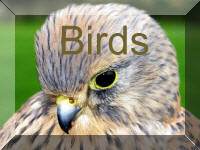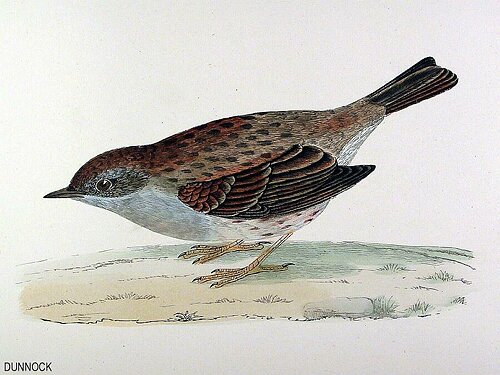Back To



Hedge sparrow, Hedge accentor,
What does the Dunnock look like ?
Small brown and grey bird., breast plumage slate grey. Quiet and inconspicuous
, it is often seen on its own, creeping along the edge of a flower bed
or near to a bush, moving with a rather nervous, shuffling gait, often
flicking its wings as it goes. When two rival males come together they
become animated with lots of wing-flicking and loud calling.
How Big Is It ?
Aprox 14.5 cm , weighing 20 g
Where does it live?
Mixed coniferous woods , parkland and cemetries
Breeding
Requires areas with thick vegetation - thickets, brambles, hedges, woodland
edges. Readily uses man-made habitats like parks, gardens and churchyards.
In northern Europe it is found in scrub and wooded tundra and in the south
in mountain areas near the tree line.
Wintering
Same as breeding habitats
When Does it Breed ?
April - July , 4-5 eggs, Incuubation 13 days , Yound Feldge in 11 - 14 days , Double Brooded . Nest of moss , often in dense cover such as conifers.
Where to see it
Lives on any well vegetated areas with scrub, brambles and hedges. Look
in deciduous woodland, farmland edges, parks and gardens. Keeps largely
on the ground and often close to cover.
What does it eat?
Soft bodied Insects, spiders, worms and seeds.
What does it sound like?
High warbling song; a loud, insistent 'seep' call
Click the link to hear the Dunnock
When to see it
All year round.
Similar species
House sparrow